Grow Ginger at Home – sounds like a challenge, right? But trust me, it’s easier than you think! Forget those expensive grocery store runs for fresh ginger; imagine stepping into your own backyard (or even just your kitchen!) and harvesting your own spicy, aromatic rhizomes. This isn’t just about saving money; it’s about connecting with nature and experiencing the satisfaction of nurturing something from start to finish.
Ginger has a rich history, dating back thousands of years in Asia, where it was prized for its medicinal properties and culinary uses. From ancient remedies to modern-day stir-fries, ginger has consistently held a place of honor in cultures around the world. Now, you can bring that history and flavor into your own home!
Why should you learn to grow ginger at home? Well, store-bought ginger can sometimes be lackluster, lacking the vibrant flavor of freshly harvested roots. Plus, knowing exactly where your food comes from and how it’s grown is incredibly empowering. In this article, I’m going to share some simple, DIY tricks and hacks that will make growing ginger at home a breeze, even if you don’t have a green thumb. Get ready to unlock the secrets to a thriving ginger patch, right in your own space!
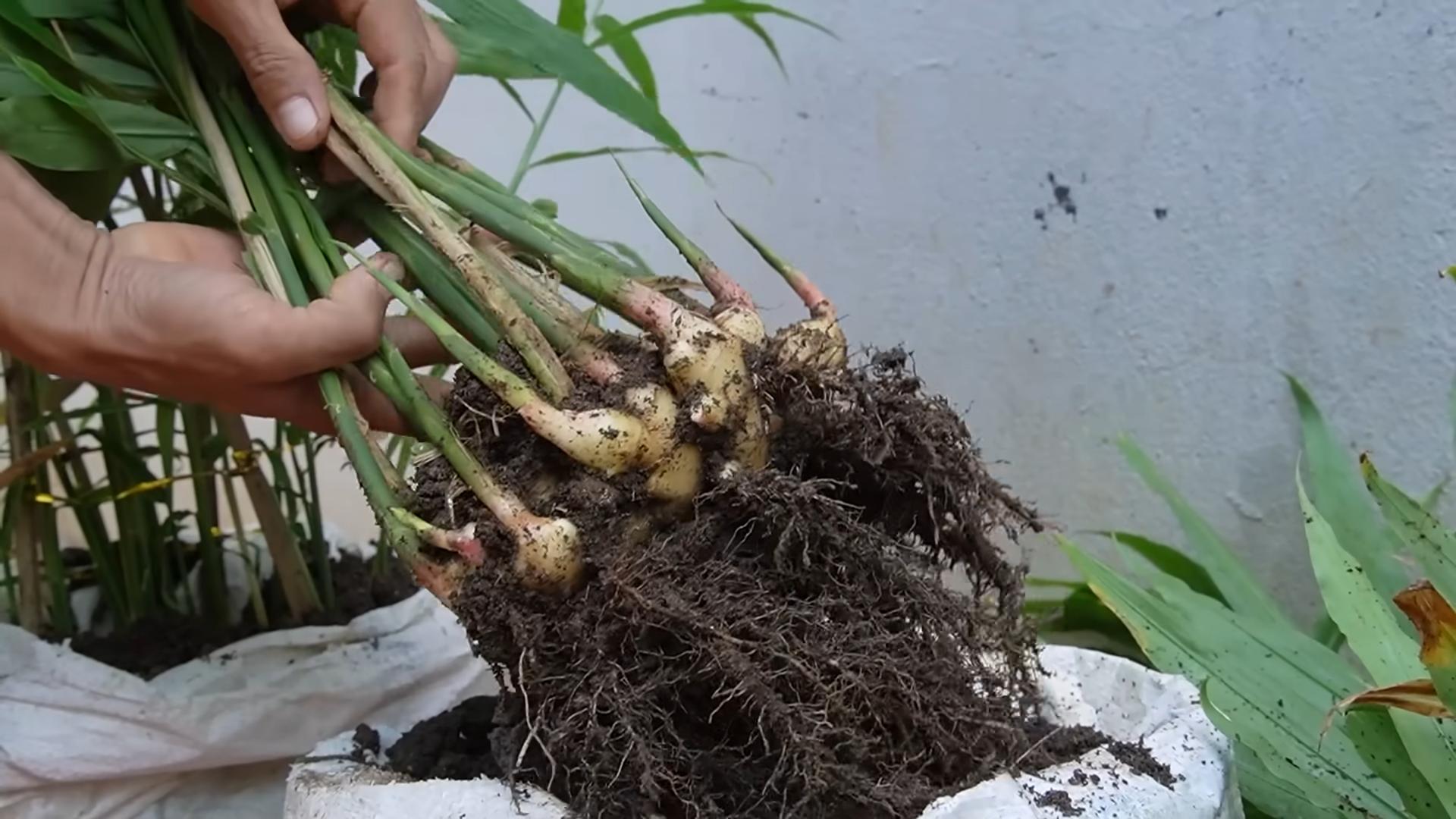
Grow Your Own Ginger: A Simple DIY Guide
Hey there, fellow plant enthusiasts! Ever thought about growing your own ginger? It’s surprisingly easy and rewarding, and nothing beats the flavor of fresh, homegrown ginger. I’m going to walk you through the whole process, from choosing the right ginger to harvesting your very own spicy rhizomes. Let’s get started!
Choosing Your Ginger Rhizome
Before we dive into the planting process, let’s talk about selecting the perfect ginger rhizome. This is the most crucial step, as it determines the success of your ginger-growing adventure.
* Look for plump, healthy rhizomes: Avoid any that look shriveled, dry, or moldy. You want a rhizome that’s firm to the touch and has a healthy, vibrant appearance.
* Check for “eyes”: These are small, green buds or growth points on the rhizome. The more eyes, the better, as each eye has the potential to sprout into a new plant.
* Opt for organic ginger: Non-organic ginger may have been treated with growth inhibitors to prevent sprouting during shipping. Organic ginger is more likely to sprout readily.
* Soak it (optional): Some people recommend soaking the ginger rhizome in water overnight before planting. This can help to rehydrate it and encourage sprouting. I’ve had success both with and without soaking, so it’s really up to you.
Preparing Your Planting Container and Soil
Ginger needs well-draining soil and a spacious container to thrive. Here’s how to get everything ready:
* Choose a large container: Ginger roots grow horizontally, so a wide, shallow container is better than a deep, narrow one. A pot that’s at least 12 inches wide and 6-8 inches deep is a good starting point.
* Ensure proper drainage: Make sure your container has drainage holes at the bottom. Ginger doesn’t like to sit in soggy soil, as this can lead to root rot.
* Use well-draining soil: A good potting mix is essential. I like to use a mix of equal parts potting soil, compost, and perlite or vermiculite. This provides the nutrients ginger needs while ensuring good drainage.
* Consider raised beds (for outdoor growing): If you’re planting ginger outdoors, raised beds are a great option. They provide excellent drainage and allow you to control the soil composition.
Planting Your Ginger
Now for the fun part – planting your ginger!
1. Fill your container with soil: Leave about an inch or two of space at the top of the container.
2. Place the ginger rhizome on top of the soil: Position it with the “eyes” facing upwards.
3. Cover the rhizome with soil: Add enough soil to cover the rhizome completely, about 1-2 inches deep.
4. Water gently: Water the soil thoroughly, but be careful not to overwater. You want the soil to be moist, but not soggy.
5. Choose the right location: Ginger thrives in warm, humid conditions with partial shade. Avoid direct sunlight, as this can scorch the leaves. A spot that receives morning sun and afternoon shade is ideal. If you’re growing ginger indoors, place it near a bright window, but away from direct sunlight.
Caring for Your Ginger Plant
Once your ginger is planted, it’s important to provide the right care to ensure healthy growth.
* Watering: Water regularly, keeping the soil consistently moist, but not soggy. Allow the top inch of soil to dry out between waterings. During the warmer months, you may need to water more frequently.
* Fertilizing: Ginger is a heavy feeder, so it benefits from regular fertilization. Use a balanced liquid fertilizer every 2-3 weeks during the growing season (spring and summer).
* Humidity: Ginger loves humidity. If you live in a dry climate, you can increase humidity by misting the plant regularly or placing it on a tray filled with pebbles and water.
* Temperature: Ginger prefers temperatures between 65°F and 85°F (18°C and 29°C). Protect it from frost and cold temperatures. If you live in a cold climate, you can grow ginger in a container and bring it indoors during the winter.
* Pest control: Ginger is relatively pest-resistant, but it can occasionally be affected by aphids or spider mites. If you notice any pests, treat them with insecticidal soap or neem oil.
* Weeding: Keep the area around your ginger plant free of weeds. Weeds can compete with ginger for nutrients and water.
Harvesting Your Ginger
The best part of growing your own ginger is, of course, harvesting it!
* When to harvest: You can start harvesting ginger about 8-10 months after planting. The leaves will start to turn yellow and die back when the ginger is ready to harvest.
* How to harvest: Gently dig around the plant and lift the rhizomes out of the soil. You can harvest the entire plant or just a portion of the rhizomes, leaving the rest to continue growing.
* Storing your ginger: Freshly harvested ginger can be stored in the refrigerator for several weeks. Wrap it in a paper towel and place it in a plastic bag. You can also freeze ginger for longer storage. To freeze, peel and chop the ginger into small pieces, then place them in a freezer bag.
Troubleshooting Common Problems
Even with the best care, you might encounter some challenges along the way. Here are a few common problems and how to address them:
* Yellowing leaves: This can be caused by overwatering, underwatering, nutrient deficiencies, or pests. Check the soil moisture and adjust your watering accordingly. Fertilize regularly and inspect the plant for pests.
* Slow growth: This can be caused by insufficient light, cool temperatures, or poor soil. Make sure your ginger plant is getting enough light and warmth. Amend the soil with compost to improve its fertility.
* Root rot: This is caused by overwatering and poor drainage. Make sure your container has drainage holes and avoid overwatering. If you suspect root rot, repot the plant in fresh, well-draining soil.
* No sprouting: If your ginger rhizome doesn’t sprout after a few weeks, it may be old or damaged. Try planting a fresh rhizome.
Enjoying Your Homegrown Ginger
Now that you’ve harvested your own ginger, it’s time to enjoy the fruits (or rather, rhizomes) of your labor!
* Cooking: Fresh ginger adds a delicious, spicy flavor to stir-fries, soups, curries, and other dishes.
* Tea: Ginger tea is a soothing and refreshing beverage. Simply steep a few slices of fresh ginger in hot water.
* Juicing: Ginger can be added to juices for a boost of flavor and health benefits.
* Candied ginger: Candied ginger is a sweet and spicy treat.
* Ginger ale: You can even make your own homemade ginger ale!
Propagating Ginger
Once you have a thriving ginger plant, you can easily propagate it to create more plants.
* Division: The easiest way to propagate ginger is by dividing the rhizomes. When you harvest your ginger, simply separate the rhizomes into smaller pieces, making sure each piece has at least one “eye.” Plant each piece in its own container.
* From seed (less common): While it’s possible to grow ginger from seed, it’s a much slower and more challenging process. Ginger seeds are not readily available, and the germination rate is often low.
Tips for Success
Here are a few extra tips to help you succeed in growing your own ginger:
* Be patient: Ginger can take several months to mature, so don’t get discouraged if you don’t see results right away.
* Observe your plant: Pay attention to the leaves, stems, and soil. This will help you identify any problems early on.
* Don’t be afraid to experiment: Every growing environment is different, so don’t be afraid to try different techniques to see what works best for you.
* Have fun! Growing your own ginger should be a rewarding and enjoyable experience.
I hope this guide has inspired you to try growing your own ginger. It’s a fun and rewarding project that will provide you with a steady supply of fresh, flavorful ginger. Happy gardening!
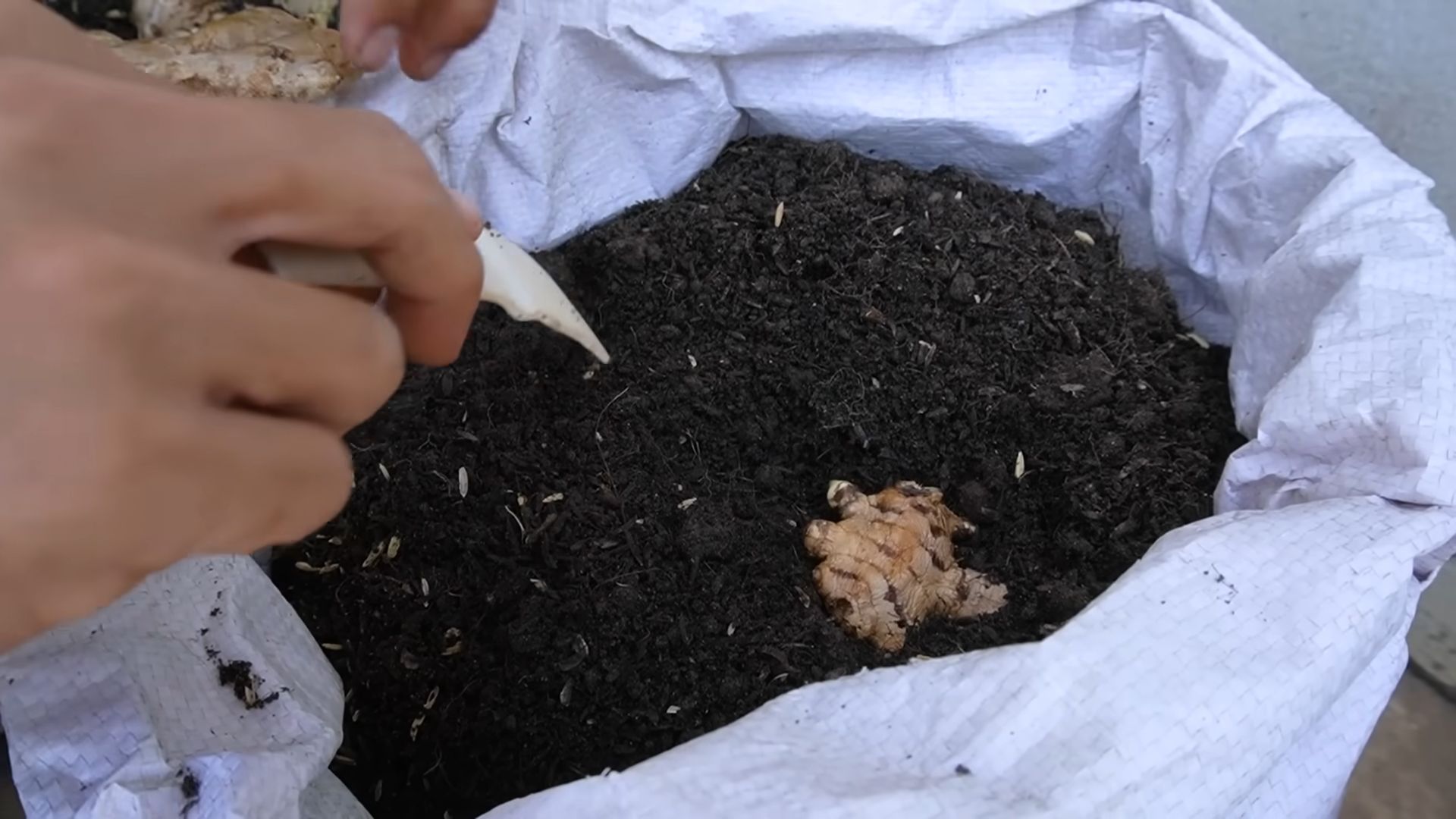
Conclusion
So, there you have it! Growing ginger at home is not only achievable, but it’s also a deeply rewarding experience that connects you to the food you eat in a whole new way. Forget those bland, store-bought ginger roots that have been sitting on shelves for weeks. Imagine the vibrant, aromatic flavor of freshly harvested, homegrown ginger, ready to elevate your culinary creations and soothe your senses.
This DIY trick is a must-try for several compelling reasons. First and foremost, it’s incredibly cost-effective. Think about how often you purchase ginger at the grocery store. Over time, those small purchases add up. By growing your own, you’re essentially investing in a sustainable source of this incredible spice, saving money in the long run. Secondly, the flavor of homegrown ginger is simply unparalleled. It’s more intense, more complex, and bursting with a freshness that you just can’t replicate with store-bought varieties. You’ll notice the difference immediately in your cooking, teas, and even your homemade ginger ale.
Beyond the economic and flavor benefits, growing ginger at home is also a fantastic way to connect with nature and learn about the growing process. It’s a therapeutic activity that can reduce stress and provide a sense of accomplishment as you watch your ginger plant thrive. Plus, it’s a great conversation starter!
But the possibilities don’t stop there! Feel free to experiment with different varieties of ginger. While common ginger is readily available, you might be able to find other types like galangal or turmeric, which are closely related and can be grown using similar methods. Consider growing your ginger in different types of containers to see which works best for your space and climate. You can also adjust the soil composition to influence the flavor and growth of your ginger. For example, adding more compost can result in larger, more robust roots.
Another variation to consider is growing ginger indoors versus outdoors. If you live in a colder climate, growing ginger indoors is a great way to ensure a continuous supply, even during the winter months. Just be sure to provide adequate light and humidity. If you’re growing outdoors, you can experiment with different planting locations to find the spot that receives the perfect amount of sunlight and shade.
We encourage you to embrace this DIY project and experience the joy of growing ginger at home. It’s easier than you might think, and the rewards are well worth the effort. Don’t be afraid to get your hands dirty and experiment with different techniques.
Once you’ve harvested your first batch of homegrown ginger, we’d love to hear about your experience! Share your photos, tips, and tricks in the comments below. Let’s create a community of ginger-growing enthusiasts and learn from each other. Your insights could inspire others to embark on their own ginger-growing journey. So, go ahead, give it a try, and discover the magic of growing your own ginger!
Frequently Asked Questions (FAQ)
1. What kind of ginger should I plant?
The best type of ginger to plant is culinary ginger, also known as common ginger (Zingiber officinale). Look for ginger roots that are plump, firm, and have visible “eyes” or buds. Avoid ginger that is shriveled, soft, or moldy. You can typically find suitable ginger roots at your local grocery store or Asian market. Organic ginger is often preferred, as it’s less likely to have been treated with growth inhibitors.
2. How long does it take to grow ginger?
Ginger typically takes around 8-10 months to mature and be ready for harvest. However, you can start harvesting small pieces of ginger after about 4 months if you need them for cooking. The plant will continue to grow and produce more ginger over time. The best time to harvest the entire plant is when the leaves start to turn yellow and die back, indicating that the ginger root has reached its peak flavor and size.
3. What kind of soil is best for growing ginger?
Ginger thrives in well-draining, fertile soil that is rich in organic matter. A good soil mix would include equal parts of potting soil, compost, and perlite or vermiculite. The compost provides essential nutrients, while the perlite or vermiculite improves drainage and aeration. Avoid heavy clay soils, as they can retain too much moisture and lead to root rot. The ideal pH for growing ginger is between 6.0 and 6.5.
4. How much sunlight does ginger need?
Ginger prefers partial shade, especially in hotter climates. Direct sunlight can scorch the leaves and stunt the plant’s growth. Aim for a location that receives morning sun and afternoon shade, or dappled sunlight throughout the day. If you’re growing ginger indoors, place it near a bright window but away from direct sunlight. You can also use grow lights to supplement natural light, especially during the winter months.
5. How often should I water ginger?
Ginger needs consistent moisture but doesn’t like to be waterlogged. Water the plant thoroughly when the top inch of soil feels dry to the touch. Avoid overwatering, as this can lead to root rot. During the growing season (spring and summer), you may need to water more frequently than during the dormant season (fall and winter). Reduce watering during the dormant season, allowing the soil to dry out slightly between waterings.
6. What are some common problems when growing ginger?
Some common problems when growing ginger include root rot, fungal diseases, and pests. Root rot is often caused by overwatering or poor drainage. To prevent root rot, ensure that your soil is well-draining and avoid overwatering. Fungal diseases can be prevented by providing good air circulation and avoiding overhead watering. Pests such as aphids and spider mites can be controlled with insecticidal soap or neem oil. Regularly inspect your ginger plant for signs of pests or diseases and take action promptly to prevent them from spreading.
7. Can I grow ginger in a container?
Yes, ginger grows very well in containers, making it a great option for those with limited space or colder climates. Choose a container that is at least 12 inches deep and wide to allow the ginger root to spread. Ensure that the container has drainage holes to prevent waterlogging. Use a well-draining potting mix and follow the same watering and sunlight guidelines as you would for growing ginger in the ground.
8. How do I store harvested ginger?
Freshly harvested ginger can be stored in several ways. You can store it in the refrigerator for up to a few weeks by wrapping it in a paper towel and placing it in a plastic bag. For longer storage, you can freeze the ginger. Peel and chop the ginger into smaller pieces, then freeze them in a single layer on a baking sheet. Once frozen, transfer the ginger pieces to a freezer bag or container. Frozen ginger can be grated directly into your recipes without thawing. You can also pickle ginger or make ginger syrup for longer-term preservation.
9. Can I grow ginger from store-bought ginger?
Yes, you can absolutely grow ginger from store-bought ginger, as mentioned in the article. Just make sure the ginger root is plump, firm, and has visible “eyes” or buds. Avoid ginger that is shriveled, soft, or moldy. Soaking the ginger in water overnight before planting can help to stimulate growth.
10. Is growing ginger at home worth the effort?
Absolutely! Growing ginger at home is a rewarding experience that offers numerous benefits. You’ll have access to fresh, flavorful ginger whenever you need it, save money on grocery store purchases, and enjoy the therapeutic benefits of gardening. Plus, you’ll have the satisfaction of knowing that you grew your own ginger from scratch. The taste of homegrown ginger is far superior to store-bought varieties, making it a worthwhile endeavor for any home cook or gardener.


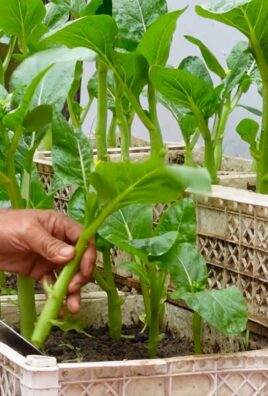
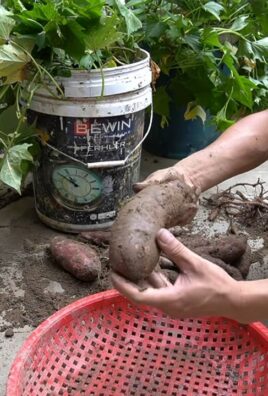
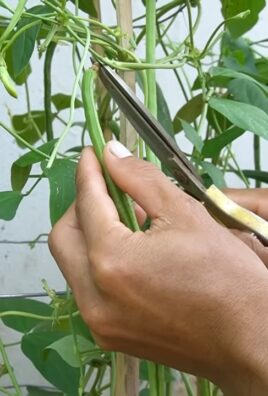
Leave a Comment